Thanh Hoa province, located in North-Central Vietnam, is one of the largest provinces, with an area of 11,106 km2 and a population of over 3.4 million people working and living in 27 districts, towns, and cities. It shares a 190-kilometer-long border with Laos on the west, which runs through mountainous terrain. With 175 kilometers of land borders, its northern neighbors are Ninh Binh, Hoa Binh, and Son La.
General Information
Thanh Hoa has a unique geographical location, with a rough river system, magnificent mountains, and a vast sea. This province is home to seven ethnic groups, including Kinh, Muong, Thai, Dao, Mong, Tho, and Kho Mu, each with their own way of life, culture, and costumes, creating a multi-colored picture of the city’s identity.
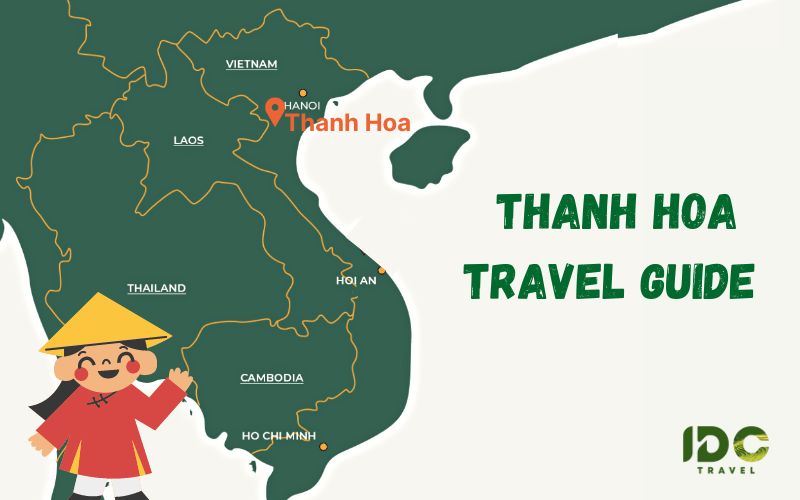
Thanh Hoa Location – IDC Travel guide
Thanh Hoa is not only known as “a sacred land of extraordinary people,” but it is also a popular tourist destination. In addition to the benefits of Sam Son beach tourism, Thanh Hoa province has over 1,500 historical sites and landscapes. Some of the most well-known names include Pu Luong Nature Reserve, Ben En National Park, Ho Dynasty Citadel, Lam Kinh Remains, and so on. Among all, Pu Luong has become a household name for hundreds of tourists in recent years as an ideal destination for eco-tours in Vietnam.
Weather in Thanh Hoa and the Best Time to Visit
Thanh Hoa, like the rest of Northern Vietnam, has four seasons. Summers are hot and humid, while winters are cold and crisp.
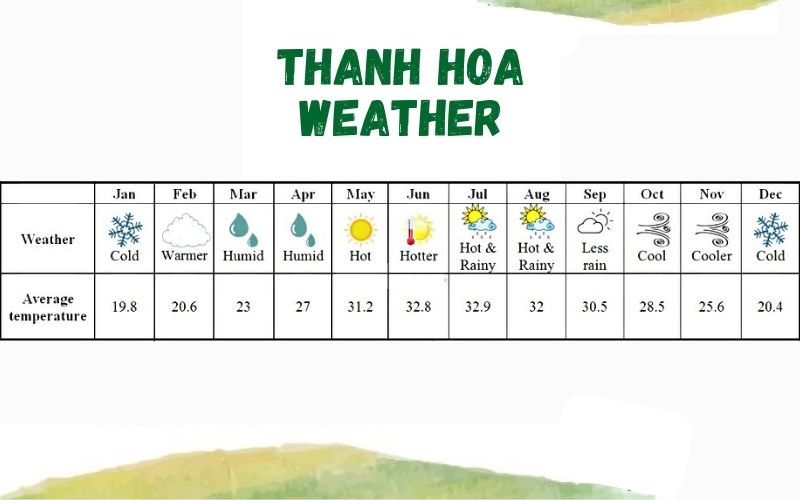
Weather in Thanh Hoa and the Best time to visit
If you want to visit the beach here from June to September, be aware that the region may be affected by typhoons. Furthermore, Sam Son Beach in Thanh Hoa is extremely popular during Vietnam’s summers and public holidays. Overall, the best months to visit Thanh Hoa are February – May and September – November if you want to swim at the beach, trek through Pu Luong Nature Reserve, and visit some religious sites.
Getting to and around Thanh Hoa
Many high-quality expressways have been brought into use as a result of significantly effective government investment in Intelligent Transportation Infrastructure, resulting in hundreds of conveniences in people’s movement. You can now travel to this province in a modern coach and train from Hanoi’s capital in a very short time. A coach journey usually takes 3 hours or less and costs between VND 90,000 and 100,000 dong for a seat on an air-conditioned coach. Train tickets range in price from VND 88,000 to 129,000 dong per seat.
From the North of Vietnam to Thanh Hoa: It is approximately 150 kilometers from Hanoi. To travel from Hanoi to Thanh Hoa, you can easily move by train, car, or motorcycle. You can also take a bus from My Dinh or Giap Bat stations to Thanh Hoa station. The ticket price ranges between 100,000 and 150,000 VND per person.
From the South of Vietnam to Thanh Hoa: Traveling by plane to Thanh Hoa is the best way to save time. The one-way ticket from Tan Son Nhat Airport to Tho Xuan Airport costs around 1,000,000 – 1,500,000 VND/person, depending on your seat class and the airline. Tho Xuan Airport is approximately 45 kilometers from Thanh Hoa province’s center. Tourists will take a taxi or bus to Thanh Hoa’s center, or they will use the hotel’s transportation services. Aside from flying, there are two other options for getting to Thanh Hoa: train and express bus.
To get around the city, you can hire a motorbike or book a taxi. We highly recommend hiring a private car with a driver when traveling in Vietnam
Where to stay in Thanh Hoa
Thanh Hoa has a variety of homestays, hotels, and resorts. Prices range from 200.000 VND to million VND, depending on amenities and location. For stays in Thanh Hoa Centre, we recommend Vinpearl Hotel and Muong Thanh Grand Hotel.
Places to visit in Thanh Hoa
Whether you are a history buff or a lover of natural beauty, Thanh Hoa should be at the top of your list of places to visit in Vietnam.
Let’s take a look at some of Mother Nature’s most beautiful gifts:
Pu Luong
Pu Luong (also known as Phu Luong) is a nature reserve in the districts of Quan Hoa and Ba Thuoc in Thanh Hoa Province’s northwestern region. This place, bounded by Mai Chau, Tan Lac, and Lac Son, is situated along two parallel mountain ridges running from the north-west to the south-west, protecting the large picturesque and poetic valley in the middle, which contains several local people’s settlements and a large area of agricultural land.
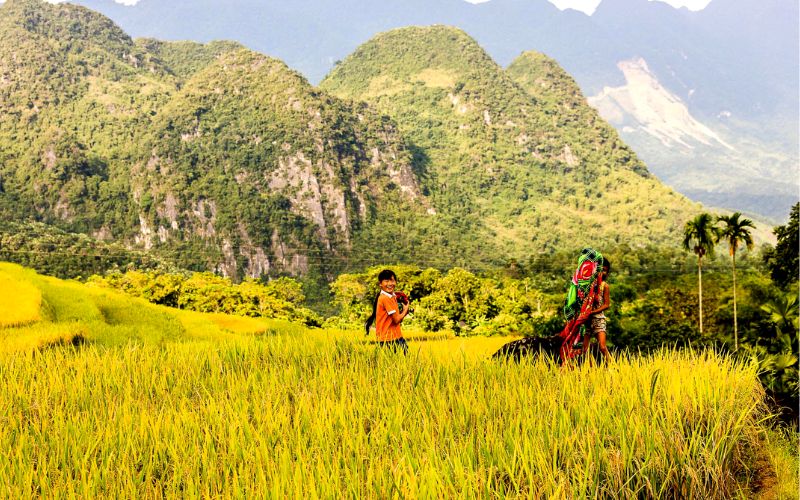
Pu Luong golden rice fields
Pu Luong Nature Reserve, with an area of 17,662ha, offers a variety of travel options, such as discovering the beauty of the natural landscape, and ecological forests with abundant fauna and flora and learning the simple and interesting customs and habits of the Thai and Muong people. When visiting Pu Luong, there are numerous activities that promise to provide tourists with unforgettable experiences.
Sam Son Beach
Sam Son is a popular destination for both domestic and international tourists. Sam Son is the province’s pride, with a long coastline of flat and gentle sandbanks, pure fresh water, and cool air, making it a must-see destination for those looking to escape the sweltering summer heat. Thanks to an investment from the FLC group, the FLC luxury Sam Son resort has recently been introduced to tourists, bringing brand new leisure and relaxation experiences. For visitors to Northern Vietnam, Sam Son has become a new heaven.
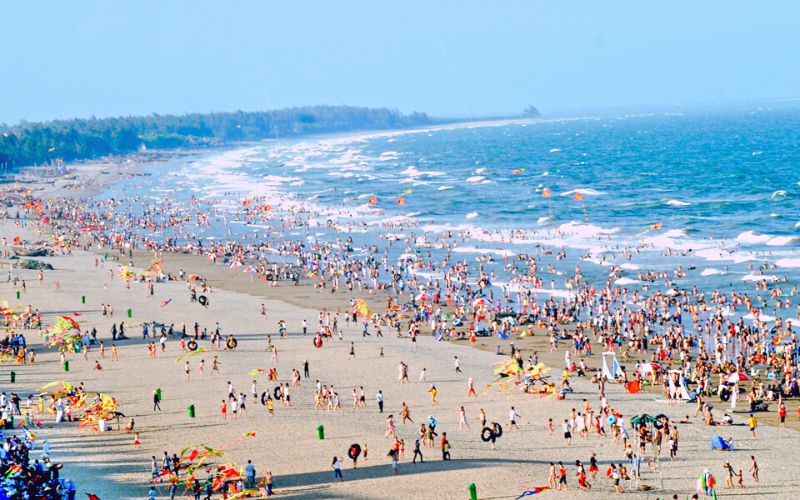
Sam Son Beach
Every summer, hundreds of tourists flock to Sam Son Beach. The beach is busy and crowded in the early morning due to the return of Nui villagers from fish-catching nights. A seafood market will then begin with a variety of fresh seafood. Come to the market at this time if you enjoy eating seafood. The sea appears to be gold-plated by the sun at noon. Visitors are welcome in the afternoon when the temperature drops. All the poets would be inspired by the sea at night when everything is blurred in the moonlight and the continuous sound of the flapping waves to the shores.
Aside from the beaches, Sam Son has an intriguing destination with many natural attractions and historical relics: the Truong Le Mountain range, the “Doc Cuoc” pagoda, and Trong Mai rock.
Ben En National Park
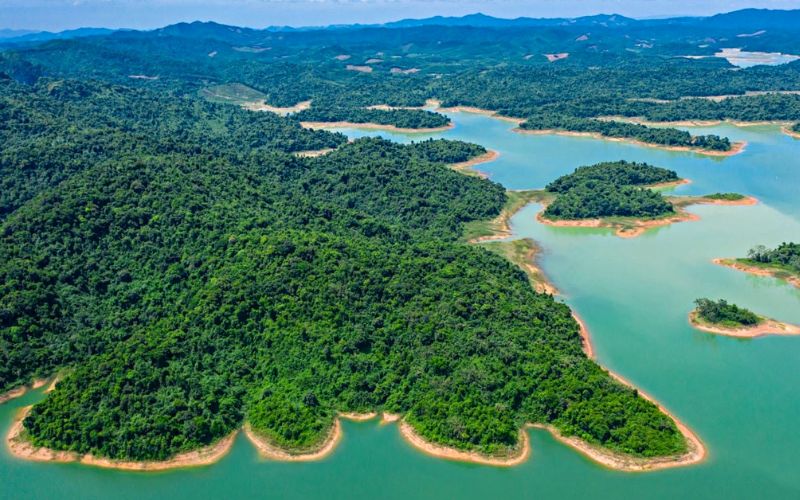
Ben En National Park
The national park is located in the Thanh Hoa province districts of Nhu Thanh and Nhu Xuan. The park, which covers an area of 14,735 hectares, includes mountains, hills, streams, rivers, and the living environment of various types of flora and fauna. So far, 1,389 plant species, 1004 animal species, 66 mammal species, 201 bird species, 54 reptile species, 31 amphibian species, 68 fish species, and 499 insect species have been recovered. The park contains 462 different types of flora and 125 different orders. A motorboat or kayak is an exciting way to explore the park.
Here are some of the popular historical and relics sites in Thanh Hoa:
The Citadel of Ho Dynasty
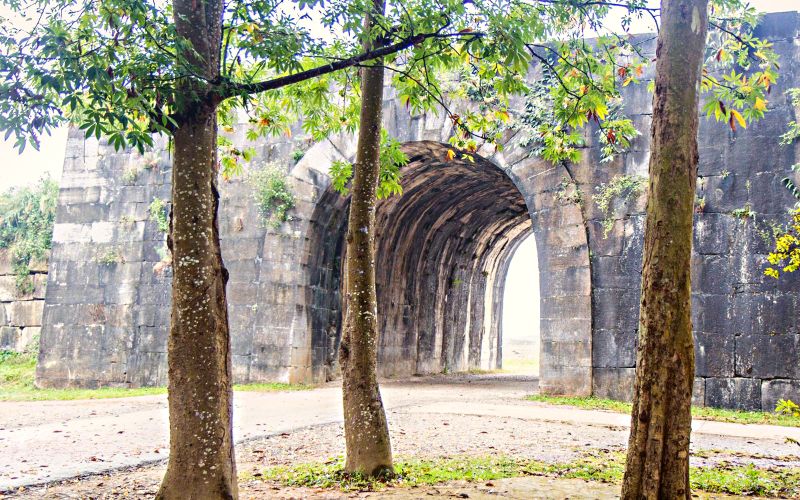
The Citadel of Ho Dynasty
The Ho Dynasty built the Ho Dynasty Citadel. It is located in Thanh Hoa province’s Tay Giai commune, Vinh Loc district. The citadel has four gates: one in the south (fore-gate), one in the north (back gate), one in the east (left gate), and one in the west. In 2011, UNESCO designated the Ho Dynasty Citadel as a World Cultural Heritage Site. This is thought to be Southeast Asia’s only remaining stone citadel.
This citadel is an excellent representation of a Southeast Asian imperial city, with distinctive architecture (feng shui principles) that aids in the preservation of its shape and structure against the effects of time and weather.
Lam Kinh remains
Lam Kinh is located 50 kilometers west of Thanh Hoa City in Xuan Lam Commune, Lam Son Town, and Kien Tho Commune. It is associated with Le Loi, a national hero and the first King of the Later Le Dynasty in history.
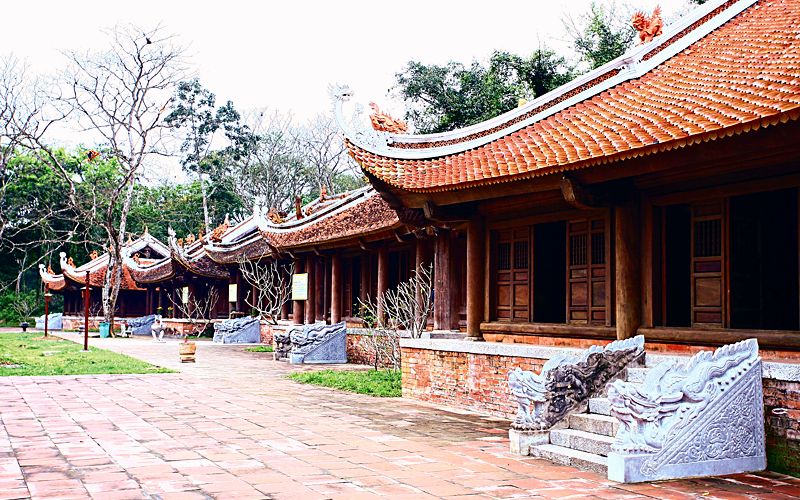
Lam Kinh remains
The citadel’s structures are located on a hill along the south-north axis. The citadel is 341m long and 254m wide. The surroundings of the citadel are quite peaceful, with plenty of green trees and fresh air. Coming to Lam Kinh remains, particularly on August 22nd, you will have the opportunity to participate in various traditional folk games in addition to contemplating the beautiful landscape and listening to the old legend about the heroic time period in Vietnamese history.
Famous festivals in Thanh Hoa province
Thanh Hoa Vietnam has many special festivals due to its long history and rich cultural tradition. Tourists should visit Thanh Hoa on these special occasions to immerse themselves in the vibrant atmosphere and learn more about Vietnamese culture.
- Ba Trieu Festival: February 20th -23rd on the lunar calendar
- Poon Poong Festival: Full moon days in January, March, July, or in the harvest season
- Dong Son Ancient Village Festival: March 2nd – 3rd on the lunar calendar
- Lam Kinh Festival: August 22nd on the lunar calendar
- Xuan Pha Festival: February 10th on the lunar calendar
What to eat in Thanh Hoa
Nem chua (Fermented pork roll)
This type of food is considered to be the symbol of Thanh Hoa cuisine. Making this food is simple, and many other provinces produce nem chua for the market. However, visitors will not find the same taste as Thanh Hoa nem chua anywhere else.
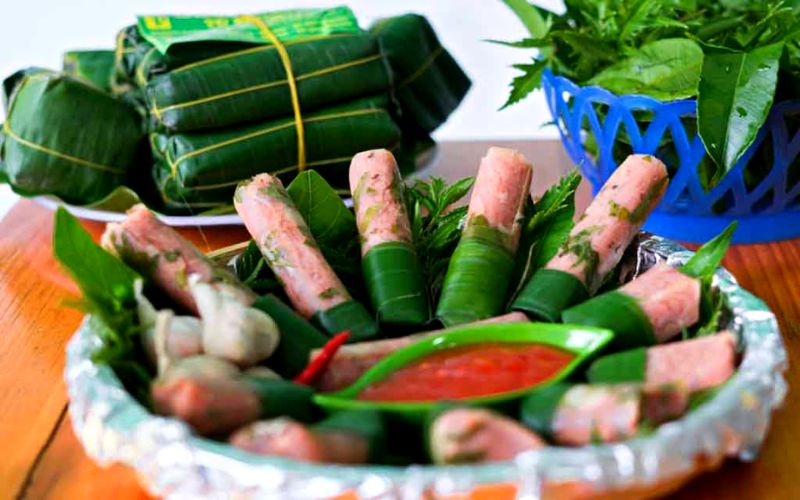
Fermented pork roll
Nem chua is a fresh pig meat roll that has a sweet, sour, salty, and spicy flavor that makes your mouth water with each bite. To make nem chua, the locals do not use heat, but rather the natural yeast of the meat. As a result, Nem chua has the flavor of fresh pork, as well as the spicy sensation of pepper and the salty flavor.
Thanh Hoa Grilled Shrimp Roll
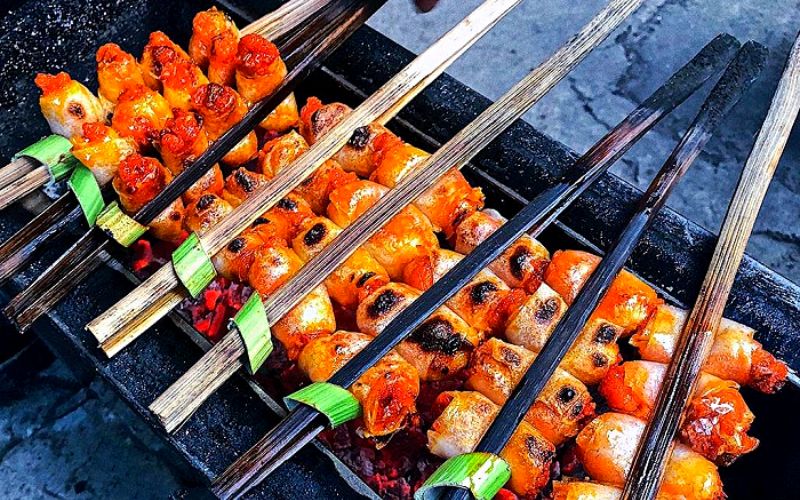
Thanh Hoa Grilled Shrimp Roll
Grilled Shrimp Roll is a rural dish with a sophisticated preparation process. The shrimp roll has a golden brown color after grilling and is covered with a layer of fat to make it visually appealing and fragrant. When the shrimp roll is still hot and crispy, the dish is at its best. Serve with sour cucumber, a little hot pepper, fresh vegetable salad, and sweet and sour sauce. Anyone who has tried the dish will remember it for the rest of their lives because of its rich flavor.
Bitter soup
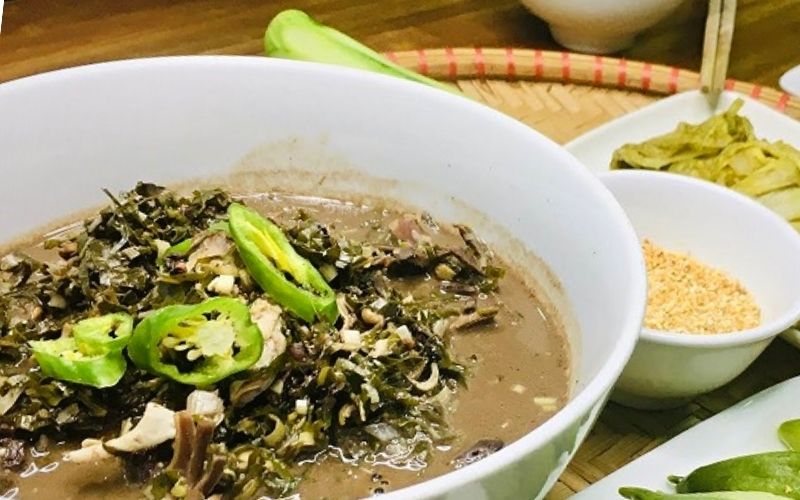
Bitter soup
Most people dislike the taste of bitterness. However, it is the main flavor of the traditional soup in Thanh Hoa. The soup is made from a bitter vegetable that is definitely not appropriate for the appetizer for the first-time trial. Locals claim that if you eat this type of soup for an extended period of time, you will become addicted to it. It is the missing flavor for Thanh Hoa residents who live far from home.
Bánh đúc sốt (Plain Rice Flan With Sauce)
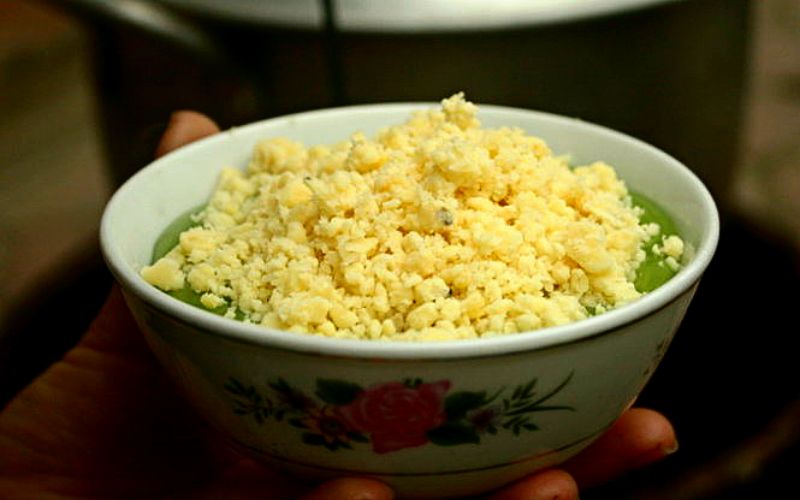
Bánh đúc sốt – Plain Rice Flan With Sauce
Plain Rice Flan With Sauce is a delicious and simple snack that many Thanh Hoa people associate with their childhood. Unlike the plain rice flan found in the north of Vietnam, Thanh Hoa’s plain rice flan is made from rice flour and green beans, giving it a vibrant green color and a sweet flavor. In the afternoon, plain rice flan with sauce is frequently sold. There aren’t many sellers of this flan left in Thanh Hoa, and it’s only available from a few street vendors. Nonetheless, you can try the dish at Flower Garden Market or Nam Thanh Market.
Nam Hà Bread
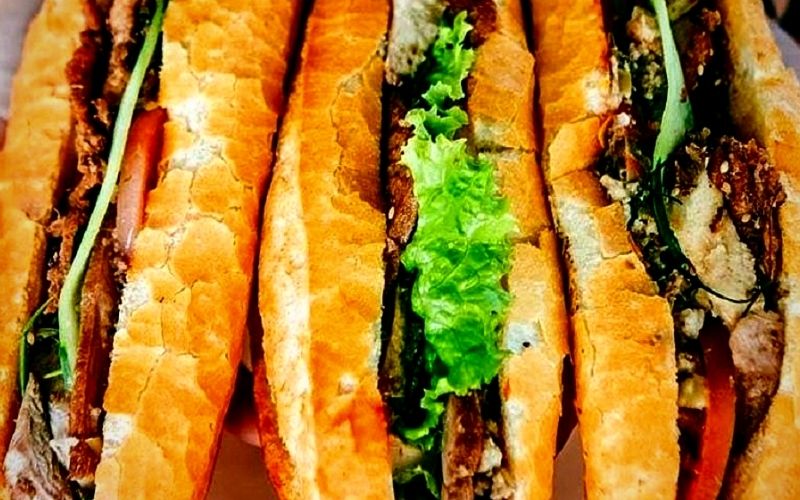
Delicious Nam Ha bread
Nam Ha Bread on Trang Thi Street is a 20-year-old traditional family restaurant in Thanh Hoa. The bread is crispy and hot with a variety of fillings, but the best are the fried spring rolls, beef jerky, and roast meat. The sauce with an extraordinary smell that you won’t find anywhere else is a distinguishing feature of Nam Ha Bread. Despite being a well-known dish, the bread is very affordable, costing between 10,000 and 20,000 VND depending on the fillings you choose.
We hope the information in the preceding article was useful in providing you with information about Thanh Hoa. Don’t be afraid to contact us and start planning your Thanh Hoa tours right away!
